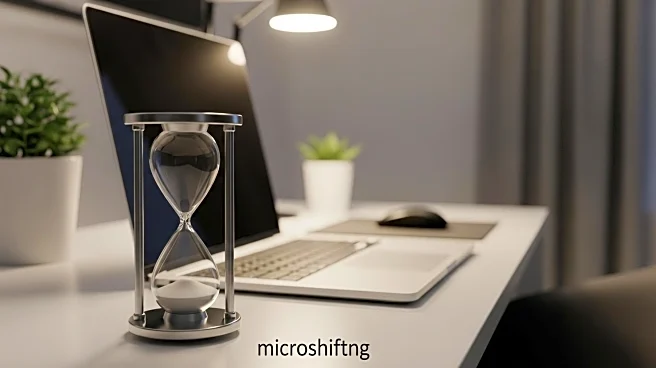What is the story about?
What's Happening?
Owl Labs has released its ninth annual State of Hybrid Work report, revealing that 65% of workers are interested in 'microshifting'—a flexible work approach involving short, non-linear work blocks tailored to individual energy levels and productivity. This method allows employees to break their workday into short, intense periods of productivity interspersed with personal activities, such as errands or exercise. The report indicates that many employees are willing to sacrifice a portion of their salary for flexible work hours or a four-day workweek. The concept of microshifting is particularly popular among Gen Z and millennials, as well as caregivers who benefit from the flexibility to balance work and personal responsibilities.
Why It's Important?
The growing interest in microshifting reflects a significant shift in workplace culture, emphasizing flexibility and work-life balance. This trend could lead to changes in how companies structure work schedules, potentially increasing employee satisfaction and productivity. By allowing employees to work during their most productive hours, businesses may see improved performance and reduced burnout. The willingness of employees to trade salary for flexibility suggests that companies offering such options could have a competitive advantage in attracting and retaining talent. This shift also highlights the evolving expectations of the workforce, particularly among younger generations.
What's Next?
As more companies consider adopting microshifting, there may be a broader reevaluation of traditional work models. Businesses might explore new policies and technologies to support flexible work arrangements. The trend could also influence discussions around labor laws and employee rights, as well as the development of tools to measure productivity in non-traditional work settings. Companies may need to train managers to effectively oversee teams working on flexible schedules and ensure that productivity and accountability are maintained.
AI Generated Content
Do you find this article useful?













